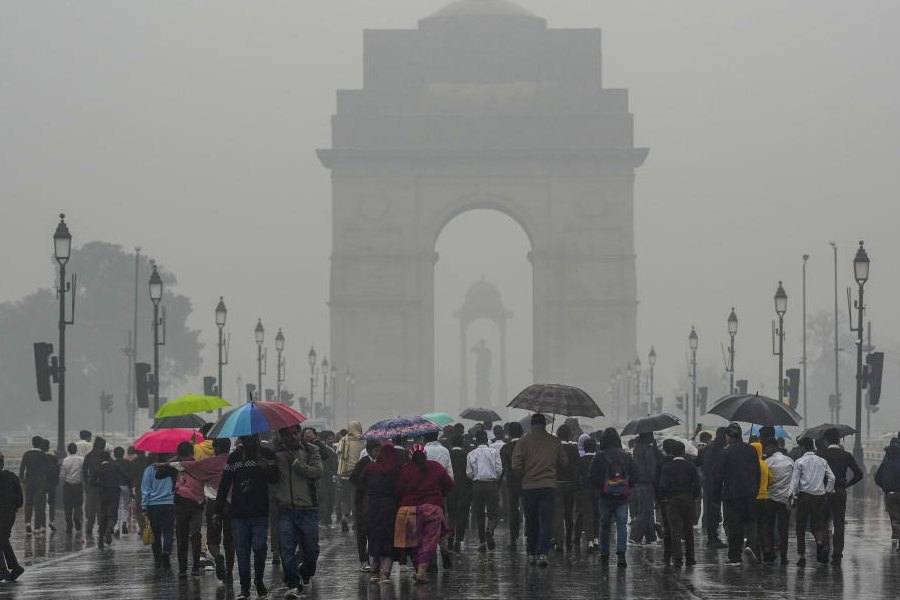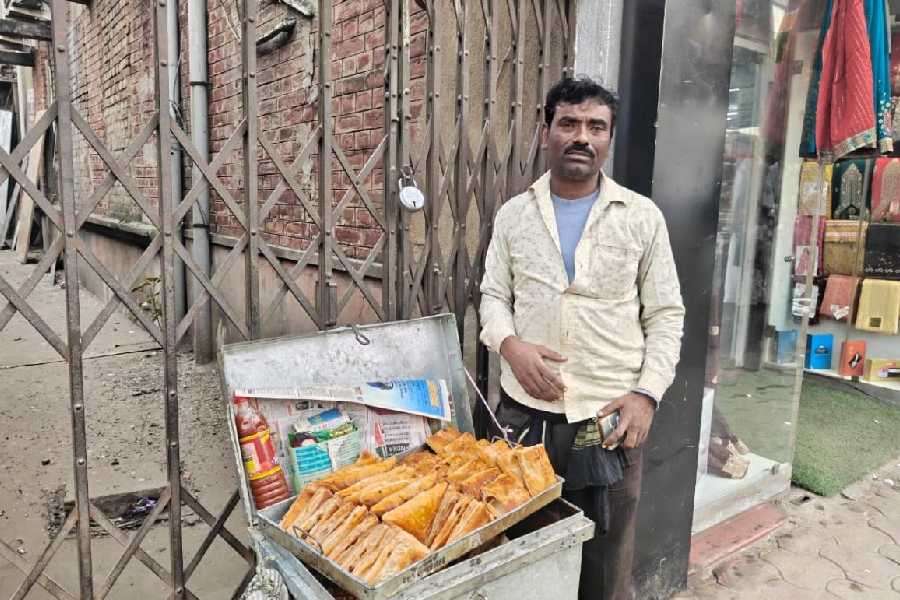The planned artificial rainfall through cloud-seeding this month is meant to ease the air pollution crisis, typical of Delhi winters in recent years.
However, the city's brush with the first-ever artificial rain experiment was actually in the monsoon of 1957, said an Indian Institute of Tropical Meteorology (IITM) report.
The Delhi government's attempt this year -- with a test run in Burari on Thursday -- marks the third chapter in the history of artificial rainfall in the city, with the second attempt traced back to the wintertime of the early 1970s, according to the report.
The trials in 1971-72 were carried out at the National Physical Laboratory campus, covering roughly a 25 km radius over central Delhi.
The silver iodide particles, released by generators placed on the ground, acted as tiny nuclei around which moisture condensed to form raindrops, the report said.
Twenty-two days were identified as favourable for the experiment between December 1971 and March 1972. Of these, seeding was conducted on 11 days, while the remaining 11 days were kept as control days for comparison, the IITM report said.
Preliminary analysis of the data indicated a tendency for increased rainfall on the seeded days, suggesting that artificial rain could indeed be triggered under suitable weather conditions, it noted.
After 53 years, Delhi once again turned to the skies on Thursday for the experiment.
Officials said during the trial in Burari, small amounts of silver iodide and sodium chloride -- compounds used to induce artificial rain -- were released from an aircraft.
However, there was less than 20 per cent moisture in the air, much lower than the required 50 per cent, and no rainfall occurred in the area.
In its report on the test run, IIT Kanpur stated, “This flight served as a proving mission to assess the capabilities for cloud seeding, the readiness and endurance of the aircraft, the functionality of the seeding equipment and flares, and the coordination among all the agencies involved.” Its report noted that specially designed flares were used to release both silver iodide and sodium chloride.
The cloud-seeding project, jointly developed by IIT Kanpur and the Delhi government, aims to explore artificial rainfall as a method to reduce particulate pollution.
The project, approved by multiple departments including the Directorate General of Civil Aviation (DGCA), seeks to assess whether artificial rain can serve as a viable solution to tackle rising pollution levels during winter.
The Delhi Cabinet approved a proposal on May 7 to conduct five cloud-seeding trials at a total cost of Rs 3.21 crore.
Over the years, research on cloud seeding has expanded across the country. New centres were established near Madras (now Chennai) and Pune, where clouds could be seeded both from the ground and through aircraft, according to the report.
Under IITM's Cloud Aerosol Interaction and Rainfall Enhancement Experiment (CAIPEEX) programme, scientists have spent more than a decade studying clouds and rainfall in different parts of the country.
During CAIPEEX Phase IV (2017–2019), IITM scientists conducted experiments in Maharashtra’s Solapur, a rain-shadow region that receives limited rainfall. Over two years, 276 clouds were studied to test the effectiveness of cloud seeding, the report said.
Cloud seeding, according to IITM, is a technique in which cloud-forming particles are introduced into clouds to enhance rainfall.
There are two main types -- hygroscopic and glaciogenic. Hygroscopic seeding is done in warm clouds, where tiny seed particles attract water vapour, helping droplets merge and grow until they fall as rain.
Glaciogenic seeding is carried out in cold clouds, where silver iodide particles form ice crystals near the cloud top, which later melt and fall as rain, the report noted.
The results from the CAIPEEX IV experiment showed that hygroscopic seeding increased rainfall by up to 46 per cent in some areas, and by an average of 18 per cent over a 100-square-kilometre area, the annual report noted.
According to IITM, in Solapur alone, the technique contributed about 867 million litres of additional water.
Cloud seeding uses advanced technology — aircraft equipped with flares release seeding material into suitable clouds, ground-based radars track cloud movements, and automatic rain gauges measure rainfall on the ground.
Scientists analyse real-time data to select the most suitable clouds for seeding, ensuring maximum efficiency, the report added.
Globally, cloud seeding is practised in more than 56 countries, including Australia, China, Russia, Thailand, the UAE, and the United States, where it is used for weather modification, rainfall enhancement, and even pollution reduction.
Except for the headline, this story has not been edited by The Telegraph Online staff and has been published from a syndicated feed.











